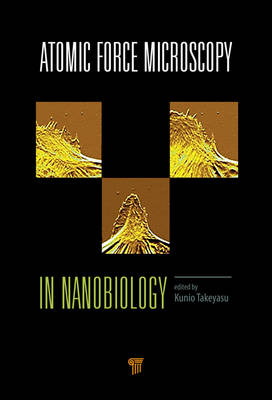
Atomic Force Microscopy in Nanobiology
Pan Stanford Publishing Pte Ltd (Verlag)
978-981-4411-58-5 (ISBN)
Edited by a prominent researcher, this volume provides an overview of modern AFM technologies: the basic AFM protocols in Part I, newly developed technologies in Part II, and the most recent applications of AFM technologies in biological sciences in Parts III and IV. The chapters are contributed by some of the leading scientists in the field of nanobiology.
Kunio Takeyasu was trained as a zoologist and neuro-pharmacologist in his early career when he was a graduate student at Hiroshima University and Osaka University. After his postdoctoral research on the molecular and cell biological aspects of membrane proteins such as acetylcholine receptors and ion-motive ATPases at Cornell University and the Johns Hopkins University, he joined the University of Virginia as an assistant professor in 1988 and started to utilize atomic force microscopy (AFM) in biological studies. After four years of research and teaching at The Ohio State University, he moved to Kyoto University as a full professor in 1995. Since then, he has been developing technologies for biological application of AFM. His most recent research has been focused on single-molecule imaging of membrane proteins and chromatin at sub-second time region with nanometer space resolution. Prof. Takeyasu has been a member of the Biophysical Society and the American Society for Cell Biology.
Basics for AFM. A Short Story of AFM in Biology. Protocols for Specimen and Substrate Preparation, and Data Correction Methods. Chemical Modification of AFM Probe and Coupling with Biomolecules. Single Molecule Dissection and Isolation Based on AFM Nano-Manipulations. Development of AFM Technology: Imaging Dynamics and Complexities. Structural Biology with Cryo AFM and Computational Modeling. Development of Non-Contact High-Resolution AFM and its Biological Applications. Development of Recognition Imaging – From Molecule to Cells. Development of High-Speed AFM and Its Biological Applications. Real-Time AFM Combined with an Inverted Optical Microscope for Wetcell/Tissue Imaging. Imaging Membranes, Proteins and DNA. AFM imaging of Cells (Fixed and Living) and of Particularcellular Organelles and Compartments. Determination of the Architecture of Multi-Subunit Proteins Using AFM Imaging. Capturing Membrane Proteins at Work. Enzymes and DNA: Molecular Motors in Action. Genome Folding Mechanisms in the Three Domains of Life Revealed by AFM Imaging. Imaging, Force Spectroscopy and Physiology. Membrane Dynamics: Lipid-Protein Interaction Studied by AFM. Nano Surgery and Cytoskeletal Mechanics of Single Cell. Functional Investigations on Nuclear Pores with Atomic Force Microscopy. Mechanotransduction: Probing its Mechanisms at the Nanoscale using the Atomic Force Microscope.
| Zusatzinfo | 24 Illustrations, color; 172 Illustrations, black and white |
|---|---|
| Verlagsort | Singapore |
| Sprache | englisch |
| Maße | 152 x 229 mm |
| Gewicht | 778 g |
| Themenwelt | Mathematik / Informatik ► Informatik ► Theorie / Studium |
| Naturwissenschaften ► Biologie ► Zellbiologie | |
| Technik ► Umwelttechnik / Biotechnologie | |
| ISBN-10 | 981-4411-58-2 / 9814411582 |
| ISBN-13 | 978-981-4411-58-5 / 9789814411585 |
| Zustand | Neuware |
| Haben Sie eine Frage zum Produkt? |
aus dem Bereich


